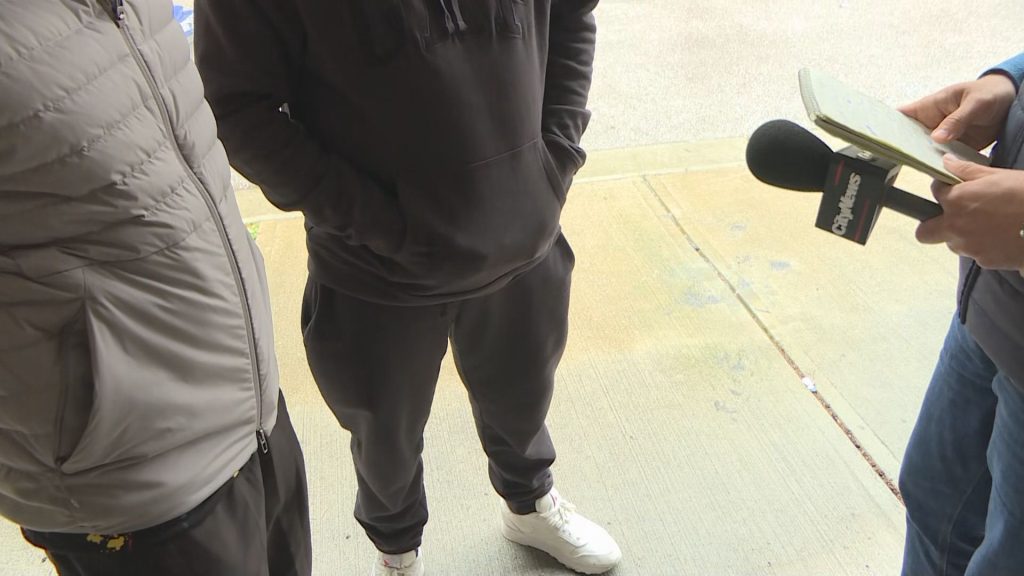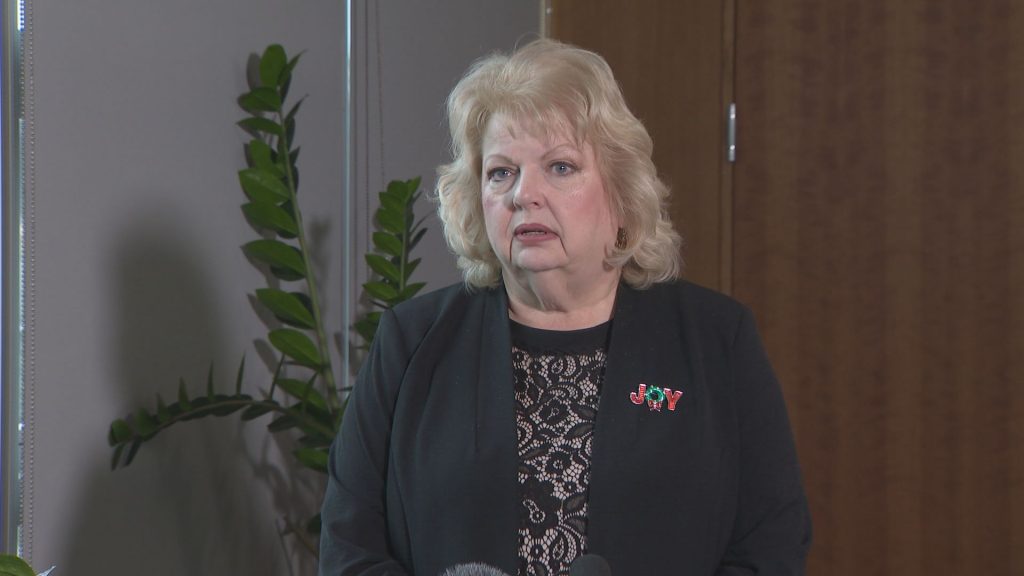A look at some key elements of the 2017-18 budget
Posted February 21, 2017 2:45 pm.
Last Updated February 21, 2017 3:20 pm.
This article is more than 5 years old.
VICTORIA – A look at some of the major elements of the B.C. government’s 2017-18 budget introduced Tuesday by Finance Minister Mike de Jong:
FINANCES:
Government departments will get almost $3 billion more in their operating budgets over the next three years.
Total government expenses are forecast to rise from $50.2 billion in 2017-18 to $51.6 billion in 2019-20.
The surplus is projected to steadily decline over the next three years, from $295 million in 2017-18 to $223 million in 2019-20.
Those are more modest surplus forecasts compared with the projected surplus of $1.5 billion in the fiscal year that ends on March 31.
“Our balance sheet is the envy of the nation,” said de Jong.
If the government hits its targets, the 2017-18 budget will be the fifth straight to record a surplus.
He has set aside a contingency fund of $400 million in the next fiscal year to cover unexpected costs.
The government estimates the total provincial debt will stand at about $69.8 billion in 2017-18, up from a forecasted $66.7 billion in 2016-17.
ECONOMIC FORECAST:
A variety of private sector forecasts put B.C. economic growth rate at 2.1 per cent in 2017, among the country’s top performers.
The Ministry of Finance says B.C.’s economy grew by three per cent in 2016.
But de Jong is also sounding a note of caution in his budget speech, warning that uncertainty about trade with the United States and declining world demand for resources could threaten the province’s economic success.
“World markets are still in flux, resource prices have not yet recovered, and political changes in our neighbours to the south have us cautious about making too many assumptions about the future,” he says in the speech.
De Jong says he has taken a conservative approach to the economic forecasts that is basing the budget on growth rates pegged slightly below projections from the Economic Forecast Council.
“This prudence acknowledges the downside risks to B.C. economic outlook, which include the potential slowdown in North American economic activity, uncertainty associated with U.S. fiscal and trade policy, ongoing fragility in Europe, and slower than anticipated Asian demand, particularly in China.”
TAX CUTS:
Tax and fee cuts aimed at families and small businesses are sprinkled throughout the budget.
For most people, the headline change is a promise to eliminate medical service premiums, starting next year with a 50-per-cent cut in the fees affecting two million British Columbians.
Families that pay the full premium will save up to $900 in 2018, and individuals will save up to $450.
Individuals with net income up to $26,000 and couples with two children and family net income up to $35,000 will be exempt from the premiums after the government raises income thresholds next year.
The government estimates it will collect more than $2.5 billion in medical service premiums in 2016-17.
A number of groups have been pressing the government to eliminate the premiums.
“We are taking this first significant step, not by raising taxes elsewhere, but by drawing upon the benefits of having Canada’s strongest economy.”
There is no timetable to eliminate the premiums, with de Jong says that decision will be made based on the province’s fiscal position down the road.
First-time homebuyers are also getting a break. The threshold for a program to help first-time buyers is being raised to $500,000, meaning a break of up to $8,000 in the property transfer tax.
Small businesses will have a corporate income tax rate cut to two per cent from 2.5 per cent starting on April 1, saving them $68 million in 2017-18.
Business will also get some relief on their hydro bills with the gradual elimination of provincial sales tax on electricity. By the time the tax is eliminated on April 1, 2019, the government says small- and medium-sized businesses will save $50 million a year.
HEALTH:
Spending on health care will increase by $4.2 billion over the next three years.
De Jong says the government will spend 41 per cent of this year’s budget on health care, with spending in 2017-18 pegged at $18.8 billion.
“We spend a lot on health care, and we should,” he said in his budget speech. “We have a growing population, and demographic shifts that also mean we have an aging population.”
The 2017-18 budget includes an additional $165 million for youth mental health, which includes more funding for counselling and treatment services offered by the Ministry of Children and Family Development, 28 specialized addiction treatment beds for youth provided by the Health Ministry, and startup costs for the B.C. Centre on Substance Use.
The additional funding will also be used to reduce waiting times for addiction treatment services offered by provincial health authorities, and to acquire and renovate buildings to house vulnerable people with mental-health and substance-use issues.
De Jong says the budget does not reflect the $1.4-billion deal the province signed last week with the federal government to improve home care and mental-health programs over the next 10 years.
EDUCATION:
The province’s school system will get an additional $740 million over the next three years, with a large chunk of that money earmarked to cover the costs of hiring new teachers after the province lost a Supreme Court of Canada decision on class size.
The 2017-18 budget allocates $5.9 billion for education.
The increased spending over the course of the three-year fiscal plan include $320 million to cover the costs of ongoing negotiations with the teachers’ union after the province lost the Supreme Court decision on class size related to special-needs children.
The B.C. Teachers’ Federation has estimated it will cost the government $250 million to $300 million a year to bring in the additional resources that will be needed after the court decision.
The province has already announced $50 million for school districts to hire hundreds of new teachers. The money is a first instalment as part of an agreement with teachers after the province’s decision in 2002 to chop contract provisions allowing teachers to bargain class sizes.
The government is also promising to increase spending by $45 million over the next three years to eliminate school bus fees.
CHILD WELFARE:
The government has been under pressure to improve services for children in its care and has promised to increase funding to its embattled Ministry of Children and Family Development by an additional $287 million over the next three years.
The money includes $120 million to implement the recommendations of a report on indigenous child welfare by Grand Chief Ed John.
The government says a recommendation to expand a program that provides early intervention services for families facing child-protection concerns is among those in line for funding, ear marking $6 million in the budget for legal-aid service pilot projects.
The ministry has been criticized by the provincial children’s advocate over the tragic deaths in recent years of children in its care.
The government is also creating up to 2,000 new child-care spaces in 2017-18, which is in addition to a previous goal of creating 13,000 new licensed child-care spaces between 2014 and 2020.










